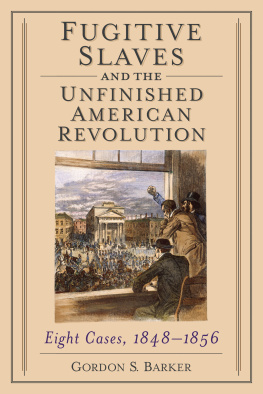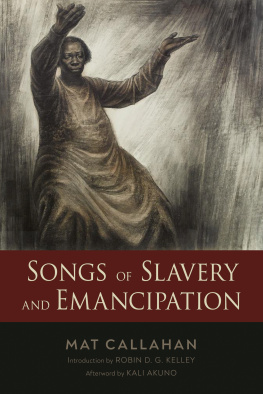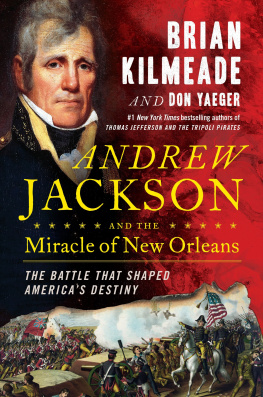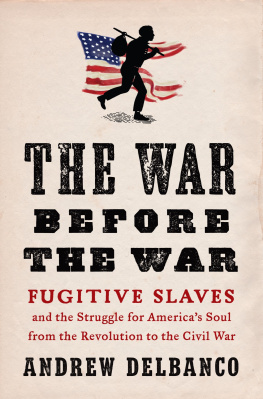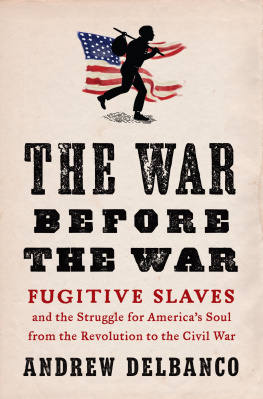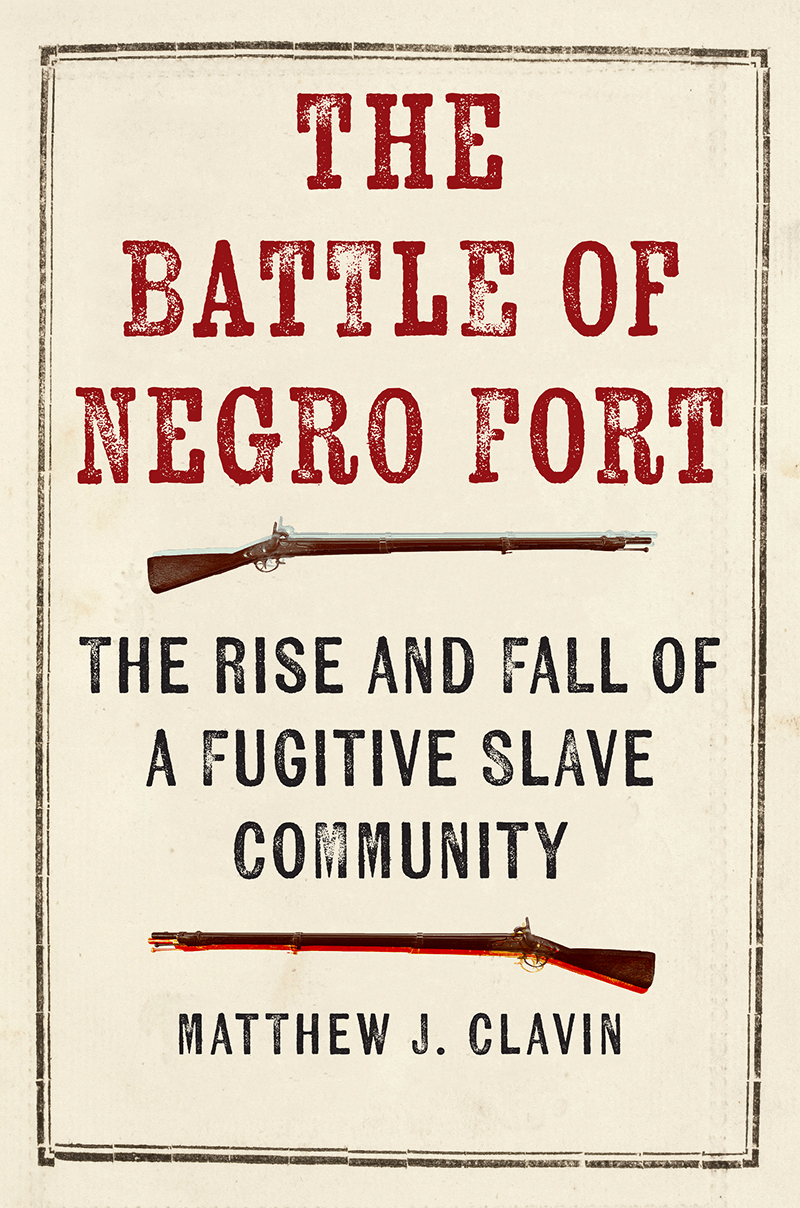
The Battle of Negro Fort
The Battle of Negro Fort
The Rise and Fall of a Fugitive Slave Community
Matthew J. Clavin

NEW YORK UNIVERSITY PRESS
New York
NEW YORK UNIVERSITY PRESS
New York
www.nyupress.org
2019 by New York University
All rights reserved
References to Internet websites (URLs) were accurate at the time of writing. Neither the author nor New York University Press is responsible for URLs that may have expired or changed since the manuscript was prepared.
Library of Congress Cataloging-in-Publication Data
Names: Clavin, Matthew J., author.
Title: The Battle of Negro Fort : the rise and fall of a fugitive slave community / Matthew J. Clavin.
Description: New York : New York University Press, [2019] | Includes bibliographical references and index.
Identifiers: LCCN 2018052782 | ISBN 9781479837335 (cl : alk. paper)
Subjects: LCSH : Negro Fort, Battle of, Fla., 1816. | FloridaHistoryTo 1821. | West FloridaHistory. | Fugitive slavesFloridaHistory19th century.
Classification: LCC E83.817 .C58 2019 | DDC 973.5/1dc23
LC record available at https://lccn.loc.gov/2018052782
New York University Press books are printed on acid-free paper, and their binding materials are chosen for strength and durability. We strive to use environmentally responsible suppliers and materials to the greatest extent possible in publishing our books.
Manufactured in the United States of America
10 9 8 7 6 5 4 3 2 1
Also available as an ebook
For the loves of my life: Gladys, Madeline, Joseph, and Joshua
Contents
List of Figures
I.1 The Southern Frontier in 1816
I.2 Seminoles in Florida
1.1 Benjamin Hawkins among the Creeks
1.2 William McIntosh
1.3 General Andrew Jackson, Hero of New Orleans
1.4 Andrew Jackson: Slave Owner and Trader
1.5 Signing of the Treaty of Fort Jackson
2.1 Discharge Certificate of Private Parish Lane
3.1 Statement of Ned
3.2 British Colonial Soldier and His Family
3.3 Aerial View of Negro Fort
5.1 Plan of Fort Gadsden and the Negro Fort Citadel
6.1 Black Seminole Abraham
Had this thing happened during the war, it would have resounded from one end of the continent to the other, to the honor of those concerned in it; for it yields in gallant daring and complete success to no incident that happened in the late contest.
Niles Weekly Register, 1816
I N the spring of 1816, Major General Andrew Jackson wrote the governor of the Spanish colony of West Florida. His letter addressed events that had taken place below the southern border of the United States since the War of 1812 had ended a year earlier. It began, I am charged by my government to make known to you that a negro fort erected during our late war with Britain has been strengthened since that period and is now occupied by upwards of two hundred and fifty negroes many of whom have been enticed away from the service of their masterscitizens of the United States. Because the fugitives at the fort were armed, disciplined, and daily increasing their numbers by encouraging slaves from the southern states and territories to join them, the general insisted that the Spanish government return those negroes now in the said fort and which have been stolen and enticed from their American owners. A refuge for fugitive slaves near the republics southern boundary was entirely unacceptable, Jackson explained, and if the Spanish government refused to eliminate it, then the United States would do so.
Despite its apparent diplomacy, Jacksons gesture was purely symbolic. The military marvel, who fifteen months earlier had led
The result of Jacksons directive was the Battle of Negro Fort, a deadly clash involving hundreds of American troops, Indian warriors, and black rebels that took place in the Florida wilderness from July 15 to July 27, 1816. Occurring a year and a half after the Treaty of Ghent brought the War of 1812 to an end, the historic encounter was a remnant of the lengthy imperial struggle between Britain and its former American colonies. But it was also part of the larger fight over freedom and slavery that raged throughout the Americas at the turn of the nineteenth century. Though it is rarely remembered alongside the legendary battles of early American history like Bunker Hill, Yorktown, and New Orleans or the unforgettable slave revolts and conspiracies led by Gabriel, Denmark Vesey, and Nat Turner, the Battle of Negro Fort marked an important milestone in the history of the early American republic.
Understanding the battles importance requires acknowledging that the American government had always sanctioned slavery. During and immediately after the American Revolution, the Articles of Confederation placed no restrictions on the practice and allowed the thirteen individual states to deal with the issue as they saw fit. The United States Constitution, which replaced the Articles
Still, the new governments stance on slavery was contradictory. Though a lifelong slaveowner, Madison at times displayed the same ambivalence over slavery as the nation he helped establish.
And he was not alone. Before becoming the first president of the United States, George Washington confided to a friend about slavery, There is not a man living who wishes more sincerely than I do, to see a plan adopted for the abolition of it.
In many ways, Jefferson embodied the paradoxes and complexities not only of American slavery but of American antislavery as well. While admitting the institutions immorality, he recommended gradual abolition along with colonization, meaning the removal of freed slaves from the United States to Africa, the West Indies, or some other place beyond the republics borders. As historians of the colonization movement have amply demonstrated, early white antislavery activists generally despised black people and dreaded their presence in the new republic, whether slavery existed or not.
Madison, Washington, and Jefferson were incapable of imagining a society in which African Americans and European Americans lived together peacefully and as equalsbut they still considered slavery an evil. Consequently, they rarely spoke out or wrote strongly in defense of the practice lest they impede what they hoped and assumed was its inevitable demise. But many of their contemporaries were far less patient. Fearful of leaving such an important matter to chance,
To the contrary, the demand for slave labor increased in the decades following American independence. After Eli Whitney invented his cotton engine, wide-eyed entrepreneurs from the eastern seaboard headed south and west, hoping to turn the rough country that stretched from the Georgia backwoods to the Mississippi River and beyond into a slave society ruled by King Cotton. To make this happen, settlers needed unfettered access to the waters that flowed south from these territories to the Gulf of Mexico, so they could more speedily bring their product to market. The Louisiana Purchase of 1803 helped in this regard by doubling the size of the republic and transferring control of New Orleansand the massive river that flowed past itfrom France to the United States. Yet a significant obstacle remained below the United States southern border: Spain refused to part with the immense colonies under its control, what the explorer Ponce de Len had referred to centuries earlier as the Land of Flowers, or La Florida.
Next page


